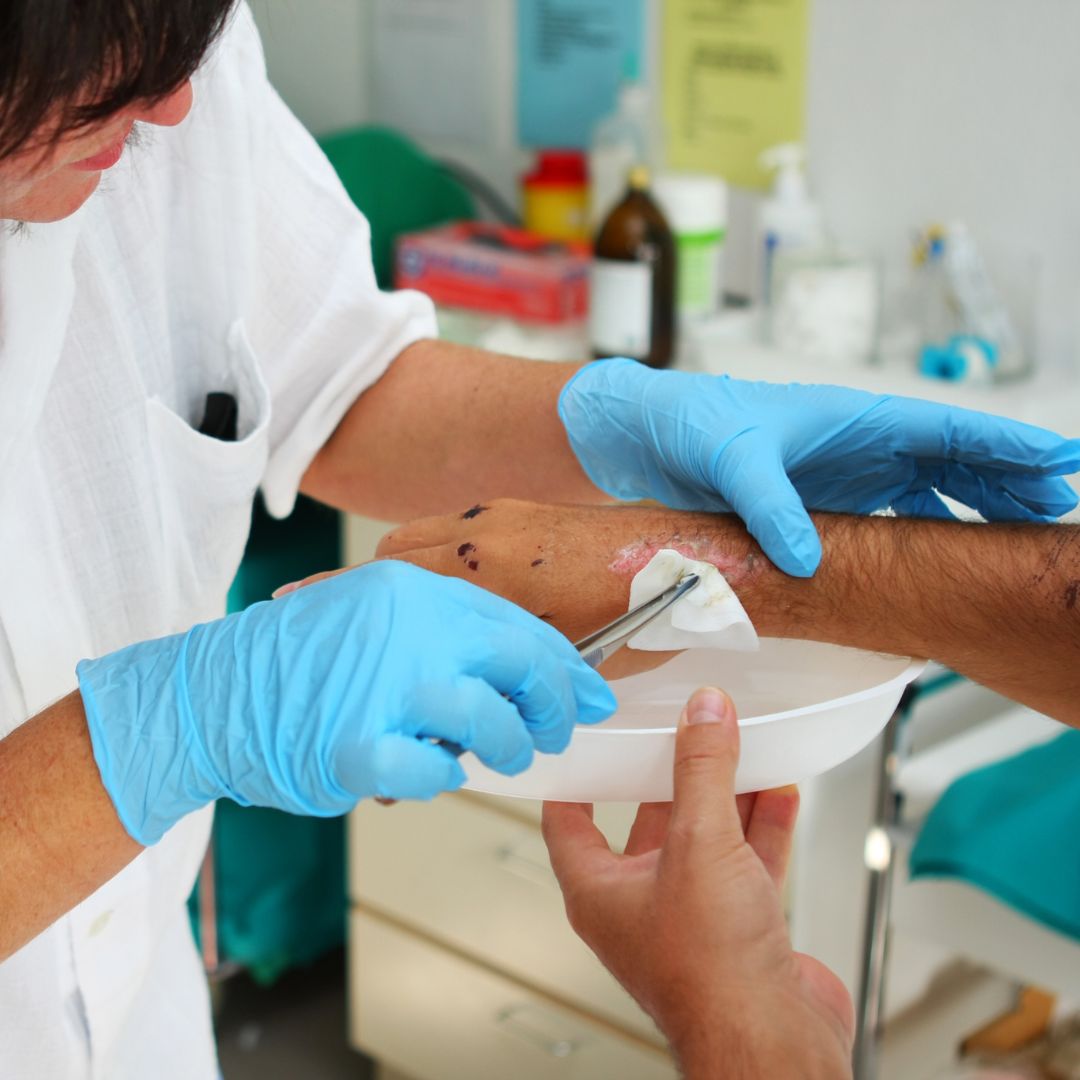Introduction
Wound treatment monitoring is an essential facet of medical care, especially in the therapy of persistent injuries and complex injuries. Whether it's a simple cut or an extra complex abscess, efficient injury administration can significantly influence recovery results. Proper approaches not only quicken recovery yet also reduce the danger of infection and complications. As health care specialists, recognizing these strategies is paramount. In this short article, we dive deep right into Wound Care Monitoring: Methods for Effective Outcomes, encompassing different facets such as training for professionals, nursing education, and progressed strategies for taking care of complicated wounds.
1. Understanding Injury Treatment Management
1.1 What is Injury Care Management?
Wound treatment administration describes the methodical method to treating injuries through proper analysis, medical diagnosis, and treatment methods. It includes every little thing from cleansing and clothing injuries to surveillance recovery progress.
1.2 Significance of Wound Care
Effective injury care is essential since it aids prevent infections, promotes faster healing, and inevitably minimizes medical care costs connected with long term treatments.

2. Types of Wounds
2.1 Intense Wounds
Acute injuries are those that heal swiftly without difficulties. They typically arise from surgery or unintended injuries.
2.2 Persistent Wounds
Chronic wounds linger in time and are usually associated with underlying problems such as diabetes mellitus or vascular disease.

3. The Duty of a Wound Care Specialist
3.1 What Does a Wound Treatment Expert Do?
A wound treatment expert concentrates on detecting and dealing with numerous kinds of injuries utilizing specialized expertise and techniques.
3.2 Training Needed for Specialists
To become an injury treatment professional, one have to undertake extensive training that consists of both theoretical expertise and functional skills.
4. Wound Treatment Professional Training
4.1 Review of Educating Programs
Training programs for injury treatment professionals differ widely but commonly include coursework on composition, complex wound care resources physiology, and the current wound care technologies.
4.2 Qualification Options Available
Various companies offer accreditations in wound care management that boost trustworthiness and knowledge in the field.
5. Wound Care Educating for Nurses
5.1 Significance of Specialized Training
Nurses play an essential role in client treatment; thus, specialized training in injury monitoring is important for supplying quality health care services.
5.2 Curriculum Parts in Nursing Programs
Most nursing programs now incorporate components focused on basic wound care training to equip nurses with essential abilities required in medical settings.
6. Wound Care Educating Courses
6.1 Online vs On-site Courses
With the surge of electronic knowing systems, lots of professionals are choosing online wound care training courses that supply flexibility without compromising on quality.
6.2 Program Web content Overview
Typical course material includes makeup pertinent to wound healing, best techniques in clothing application, infection control measures, amongst others.
7. Basic Wound Care Training Essentials
7.1 Secret Abilities Acquired Via Basic Training
Basic wound care training outfits individuals with skills like cleansing methods, using dressings correctly, and recognizing signs of infection.
7.2 Significance of Hands-on Practice
Theory alone isn't sufficient; hands-on practice is essential for creating self-confidence and efficiency in handling injuries effectively.
8. Advanced Strategies in Intricate Wound Care
8.1 Recognizing Complex Wounds
Complex wounds need specialized treatments because of their nature-- typically entailing much deeper tissues or underlying health and wellness problems that prevent recovery processes.
8.2 Therapy Modalities
Advanced techniques include unfavorable pressure injury therapy (NPWT), bioengineered cells, and various other ingenious approaches customized to advertise healing in complicated cases.
9. Chronic Wound Care Management Strategies
9.1 Identifying Underlying Causes
Identifying the root cause of chronic injuries-- be it inadequate circulation or diabetes-- is important for reliable treatment plans.
9.2 Multidisciplinary Approach
An effective persistent injury management technique usually entails cooperation among various doctor consisting of dietitians, podiatrists, and physical therapists.
10. The NDIS (National Handicap Insurance Policy Scheme) & Injury Care
10.1 NDIS Assistance Services
For individuals under the NDIS structure requiring continuous wound monitoring support services are essential to guarantee they get suitable care customized to their needs.
10.2 Funding Options Available
Understanding financing alternatives readily available via NDIS enables patients to access necessary treatments without financial burden.
Frequently Asked Concerns (Frequently asked questions)
Q1: What certifications do I need to end up being an injury treatment nurse?

Q2: For how long does it take to finish a wound care training course?
A: Training course period varies; however, many online programs can be finished within a number of weeks while thorough qualification programs might take months relying on deepness and timetable flexibility.
Q3: Can I manage my very own persistent wounds at home?
A: While some patients can handle small chronic wounds at home with correct education and learning from doctor, serious instances should constantly be examined by specialists to prevent complications.
Q4: Why is infection control critical in injury management?
A: Infection control protects against issues that can occur from without treatment infections which might delay healing or bring about much more extreme wellness concerns needing considerable clinical intervention.
Q5: Exist certain products advised for persistent injury management?
A: Yes! The choice of items depends upon the type of persistent wound; common choices include hydrocolloid dressings, alginates, foam dressings etc, customized based upon individual needs assessed by healthcare providers.
Q6: Is there recurring education available after preliminary certification?
A: Absolutely! Numerous companies urge continual specialist advancement with workshops, workshops, on-line resources ensuring experts remain current with advances in effective practices associated with chronic injury treatment management.
Conclusion
In verdict, reliable Wound Care Administration: Approaches for Effective Outcomes rely greatly on competent professionals that comprehend both standard concepts and advanced methods crucial for promoting ideal healing conditions throughout varied person populaces-- from acute injuries requiring instant attention to intricate persistent injuries needing recurring assessment and treatment techniques tailored towards all natural wellness purposes. By focusing on education with comprehensive training programs created especially around advancing standards within this vibrant area-- healthcare specialists can improve their capability supplying outstanding solution while guaranteeing positive client experiences generating successful results over time.